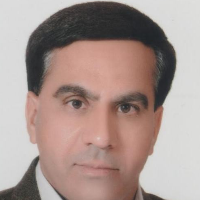Plagioclase as evidence of magmatic evolution in the Zafarqand porphyry copper deposit, NE Isfahan
Chemical and textural zoning patterns preserved in plagioclase phenocrysts can provide useful information on parameters that constrains the changing melt compositions in the magma systems. Many studies have utilized the compositional and textural information recorded in plagioclase from igneous rocks to infer the various aspects of magma chamber dynamics and the source of copper in the copper deposits (Viccaro et al., 2010). The Zafarqand porphyry copper deposit is located at the center of the Urumieh-Dokhtar magmatic arc and is mainly composed of Eocene volcanic and sub volcanic rocks, which were intruded by Miocene granodiorite. Alteration and mineralization in this area are superimposed onto the associated porphyritic body and the surrounding country rock (Aminoroayaei Yamini et al., 2016). In this paper, the growth of the plagioclase crystals in the magma is simulated on the basis of various microtextures and their profile composition. Magma mixing, magma recharge phenomenon, and the source of copper are also examined in this area.
A total of 200 samples were collected by the variation of lithology from the volcano-plutonic unit of Zafarqand. About 60 thin sections were made and petrographic observations were carried out using a polarizing microscope. The major-element compositions of plagioclase were analyzed at EPMA Laboratories of Naruto University in Japan and the University of Oklahoma. For analyses, an accelerating voltage of 15 kV, a beam current of 20 nA, and 20s counting time was used. The EPMA data obtained from some representative samples are shown in Tables 2 and 3.
Plagioclase is the most abundant phenocryst phase in Zafarqand plutonic rocks. Based on their textures, plagioclases found in the host granodiorites fall into three populations. The most common population consists of medium grains that have oscillatory zoning. However, synneusis texture is shown in this rock. Granodiorite plagioclase phenocrysts exhibit strong resorption zones and are composed of profuse network micron-sized glass inclusions.
Plagioclases from andesitic dyke also fall into two populations: Plagioclase microlites and phenocryst grains. Phenocryst grains commonly have coarsely sieved interiors resulting from the presence of an extensive network of interconnecting inclusions that pervade the crystal periphery with oscillatory zoning.
In many rhyodacites, plagioclase phenocrysts appear broken as evidenced by their cracked morphology. Resorption surfaces are the horizons, like an unconformity surface mark a boundary between the other phases.
The magmatism of the Zafarqand district is often typified by the occurrence of mafic enclaves (cognate xenoliths) indicative of comagmatism and geochemical mixing trends (Aminoroayaei Yamini et al., 2016). This area corresponds to an intrusion that would be linked to a subduction-related geodynamic context. The overall similarity in the REE patterns of the volcano-plutonic rocks exhibits a common source and same geological features for them but different age (Aminoroayaei Yamini et al., 2016).
However, from the plagioclase textural observations a simplified magma plumbing model is envisaged for the studied crystals. At the initial stage, water saturated high temperature magmas have undergone extensive crystallization at lower-crustal chamber depth (Deeper MASH Zone) where optically clear An-rich plagioclase is produced. When this crystal-rich magma ascends to shallow depths, the crystals have undergone varying rates of dissolution that causes the development of CS morphologies. Variation in dissolution intensity may be due to differences in the rate of decompression or H2O content dissolved in the magma (Viccaro et al., 2010). The crust chamber was dynamically active by the input of Shallow MASH Zone pulses. Consequently, the growth of both pre-existing and newly brought crystals was constrained by the heterogeneous superheating and convection processes. As a result, they developed OZ and RS textures. Dissolution happens during magma mixing. However, the presence of microgranolar mafic enclaves and OZ texture in granodiorite from Zafarqand precludes the possibility of end-member magma mixing in these rocks. Thus, RS is the result of superheating and intense dissolution by mafic magma recharge event. Such recharge events could be like a cryptic-mixing process in which the magma chamber experiences repeated addition of small pulses of primitive and hotter and more mafic magma with different (O2) or H2O contents (Ginibre et al., 2002). After the recharge event, the pre-existing crystals in the crust chamber interacted with new magma causing intense dissolution in the form of RS morphology. In addition to the heating and intense dissolution, crystals in the crust chamber also experienced repeated movements across the magmatic gradients by convection or turbulence as evidenced from the OZ domains in the plagioclase (Ginibre et al., 2002). Then, the magma chamber might have experienced under-cooling by degassing or water exsolution followed by violent aerial eruption producing microlites, broken crystals. The occurrence of sulfide melt in the grandmas of biotite and amphyole phenocrists, mafic enclaves and magma mixing feature, suggests that, similar to the Bajo de la Alumbrera deposit, the injection of more mafic magma may also contribute a large amount of ore metal to the magma chamber and generate Cu mineralization at the Zafarqand deposit.
- حق عضویت دریافتی صرف حمایت از نشریات عضو و نگهداری، تکمیل و توسعه مگیران میشود.
- پرداخت حق اشتراک و دانلود مقالات اجازه بازنشر آن در سایر رسانههای چاپی و دیجیتال را به کاربر نمیدهد.



